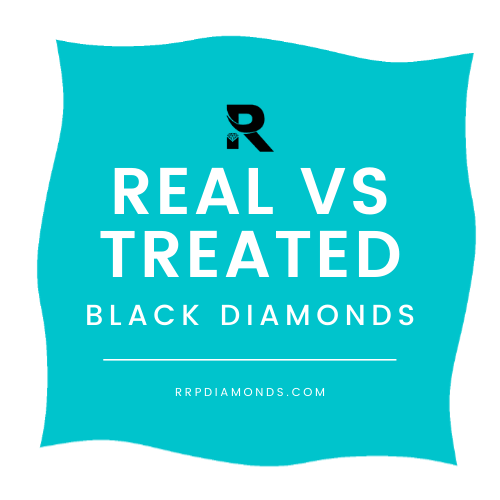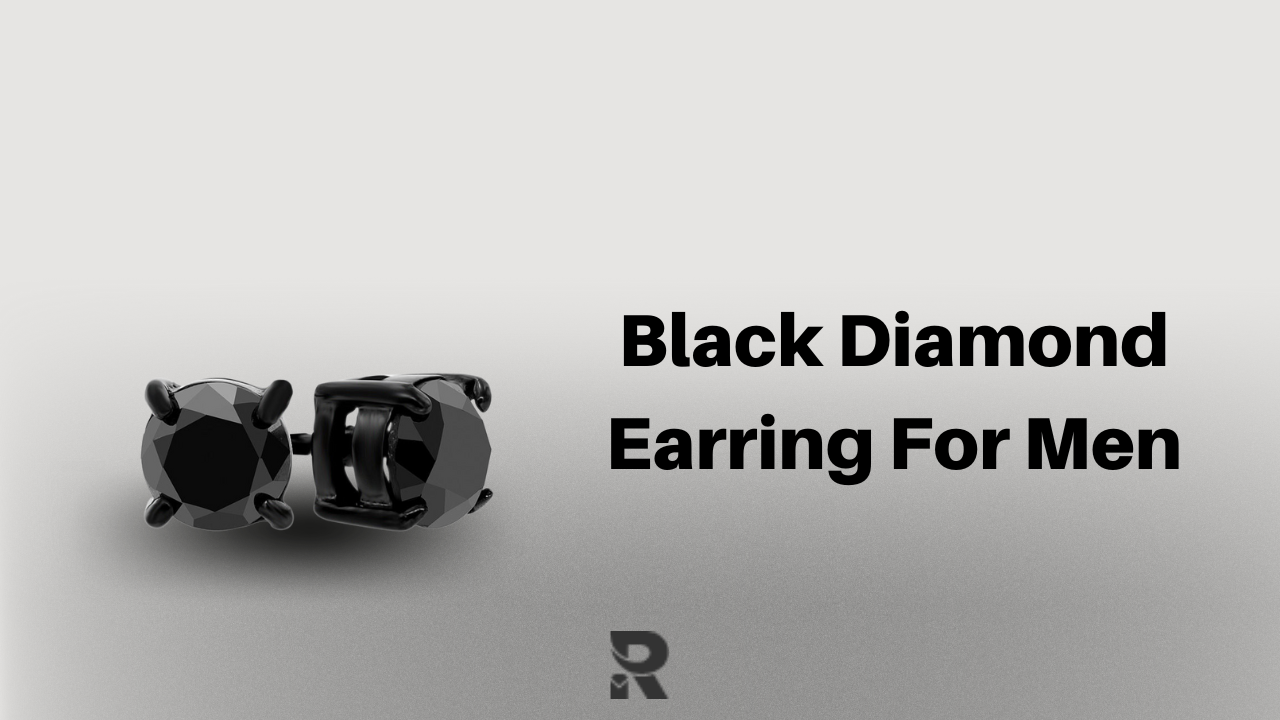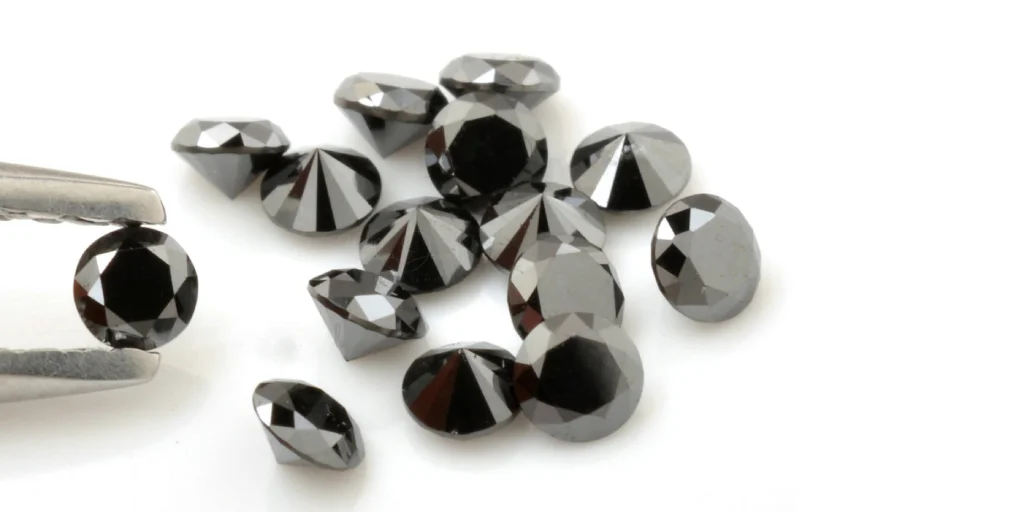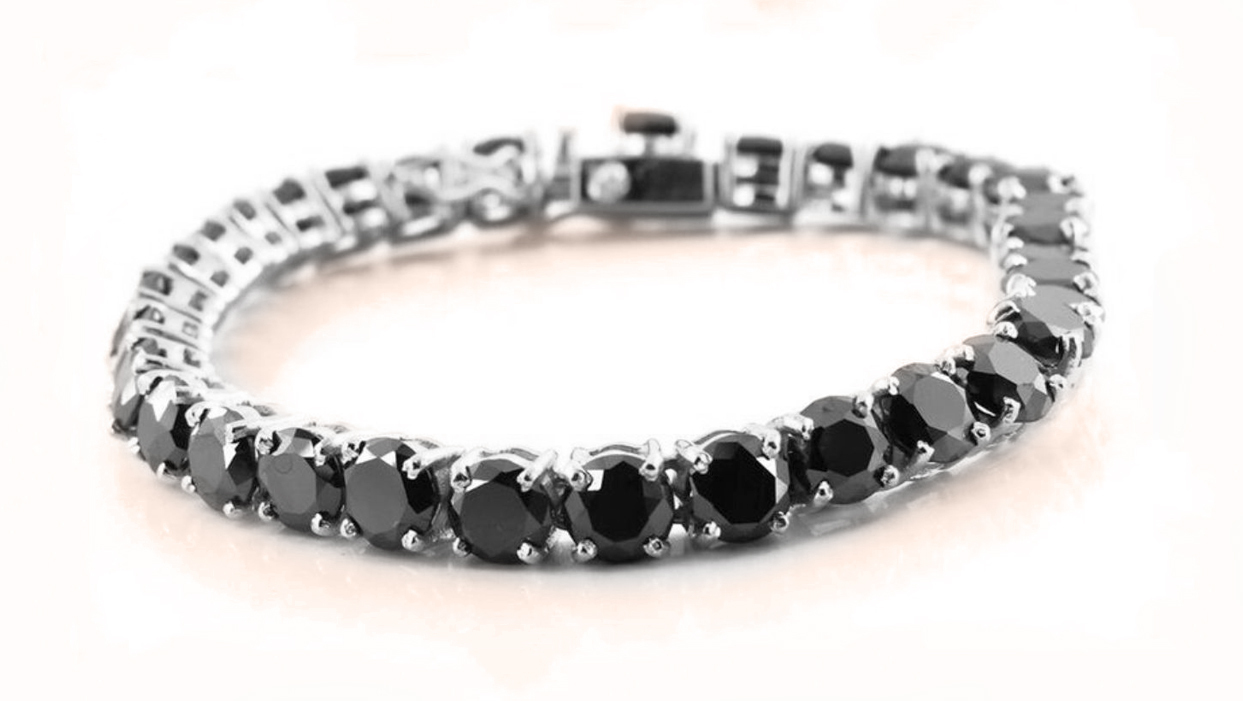
Black diamonds are all the rage right now. More and more people are embracing this sophisticated and mysterious gem. However, there is still some ignorance among the general public regarding the various types of black diamonds.
Below are the most common questions that many people’s have about black diamonds such as:
- How black diamonds form naturally?
- How much do natural black diamonds cost?
- Where are natural black diamonds found?
- Where do natural black diamonds come from?
- Where to buy natural black diamonds?
- How much are natural black diamonds?
In fact, you may not yet know that not all types of black diamonds are the same. Some black diamonds are found in their characteristic black color in nature itself. These diamonds are known as natural black diamonds.

On the other hand, there are certain diamonds that are treated in the lab to give them their color. These diamonds are known as treated diamonds. There are many other differences between natural black diamonds and treated ones.
Let’s have a look at them.
What are natural black diamonds?
First and foremost, you need to understand what black diamonds are in their natural form, what their structure is, and how they are formed. Only then can you differentiate them from treated black diamonds.
At their very core, black diamonds are not very different from white diamonds. They have the same structure in terms of the placement of carbon molecules and the chemicals that form the building blocks of these diamonds. Therefore, the belief that black diamonds are not real is entirely unfounded.
Natural black diamonds get their color from inclusions of various types of minerals in them. These minerals include large amounts of graphite, along with other chemicals like pyrite and hematite. Natural black diamonds also have many cleavages and fractures in them.
Over time, there is a deposition of graphite in these fractures as well, resulting in an even more increase in the graphite content of the diamond. This large amount of graphite is what results in the black stain of the diamonds.
Due to the high amount of graphite content, natural black diamonds are often known as carbonados. They are found only in two places on the planet – Brazil and Africa. They are mined from beds of rivers and streams in these areas.
Natural black diamonds, as mentioned before, are formed under the surface of the Earth, and when they are mined, they already have the characteristic color. They are not treated in any way to enhance the color of the diamond and were formed purely by natural forces.
[su_button url=”https://www.rrpdiamonds.com/product-category/black-and-rough-diamond/loose-black-natural-loose-diamonds/” target=”blank” background=”#0ba285″ color=”#ffffff” size=”7″ center=”yes”]Shop Real Black Diamonds[/su_button]
Also read: All That You Need to Know About Black Diamonds in 2020
What are treated black diamonds?
Enhanced or treated black diamonds are terms that are used for black diamonds that have been colored artificially. Natural black diamonds are very rare, and can only be found in two places on the Earth. To meet the demands of a growing market, diamond manufacturers have started offering white or colorless diamonds whose color has been turned black.
Interestingly, the majority of the black diamonds in the market are now treated. It should also be noted that jewelers only use colorless diamonds that have very low clarity for this purpose. This is because clear white diamonds are high in demand and very expensive. On the other hand, white diamonds with low clarity are not usable for making jewelry, which makes them perfect for making black diamonds.
This treatment is done by exposing white or yellow-colored diamonds to high heat and radiation. In some cases, extreme pressure may also be used. The irradiation, specifically, results in a change in color of the diamond, usually to dark green. This dark green color absorbs almost all the light that falls on it, giving it a black appearance, and the diamond appears completely dark to the naked eye.
Many treated already have a grey color when they are mined from the core of Earth. They are sometimes very heavily included, and may even have fractures. Application of heat, pressure, and radiation results in the graphitization of their fractures, which turns them black.
Some treated black diamonds are also created by applying a coat on their surface. However, this coating is usually not durable and will come off when the stone is cleaned. That is why it is not recommended to buy such stones.
[su_button url=”https://www.rrpdiamonds.com/product-category/black-and-rough-diamond/loose-black-natural-loose-diamonds/” target=”blank” background=”#0ba285″ color=”#ffffff” size=”7″ center=”yes”]Shop Treated Black Diamonds[/su_button]
The differences between Natural and Treated black diamonds
When it comes to physical and chemical properties, you will be surprised to know that there is not a lot of difference between the two types of diamonds. They behave the same way chemically, and they absorb the light in the same way to create their characteristic appearance.
-
The process of formation
The main difference between natural and treated black diamonds is the color induction process. Natural black diamonds get their color from being subjected to environmental processes under the surface of the Earth, whereas treated black diamonds get their color by being treated in a lab.
-
The structure
Another difference between the two types of diamonds is their structure. Natural black diamonds have a lot of fractures and cleavages that make them more porous. These cleavages also have a lot of graphite deposition in them. The increased amount of graphite results in them being completely opaque and dark looking.
On the other hand, treated black diamonds have a shinier look, because they are developed from white or colorless diamonds. Although they are black, they are not completely opaque and do not absorb all the light that falls on them, the way natural diamonds do. Depending on the kind of treatment they have received, treated black diamonds can be shiny.
-
The reflective quality
And due to their shiny appearance, treated black diamonds can also be differentiated from natural black diamonds quite easily. The differences become quite obvious when the diamonds are placed under a strong source of light. The treated black diamond will have a translucent appearance, while the natural black diamond will appear completely opaque. While the treated diamond will shine and reflect light under such circumstances, the natural black diamond will simply absorb it all and appear completely dark.
-
The appearance under magnification
You can also notice the differences between the two types of diamonds if you view them with a magnifying glass under a strong source of light. A natural black diamond will look like it has a salt and pepper appearance, while the same cannot be said about treated black diamonds.
-
The strength
Natural black diamonds are also more durable than treated black diamonds. This is because treated black diamonds have large fractures that can often reach their surface. This happens because of the process of applying heat and pressure, which results in the graphitization of the large fractures. This makes the diamonds more brittle. That is why, you also need to take care of a treated black diamond more than a natural one, although both types of stones should be treated with love and care.
Also Read: Tips for Beginning Diamond Trader: How to get started career into the diamond industry.
Closing thoughts
Whether you want to pick a black diamond that is natural or treated is entirely dependent on your preference. Both types of stones have their unique set of qualities, and pros and cons. If you love the idea of a pure black diamond that is formed just as it is in the mantle, pick a natural diamond. However, be aware of the fact that it will not be very sparkly like white diamonds, as they are completely opaque stones. If you want a shiny black diamond, you will be better suited to a treated diamond.
No matter which one you pick, you should get a certificate stating the quality of the diamond and its type from your jeweler. This is to ensure that you are getting what you are paying for, and so that you can reclaim the original cost of the diamond.


